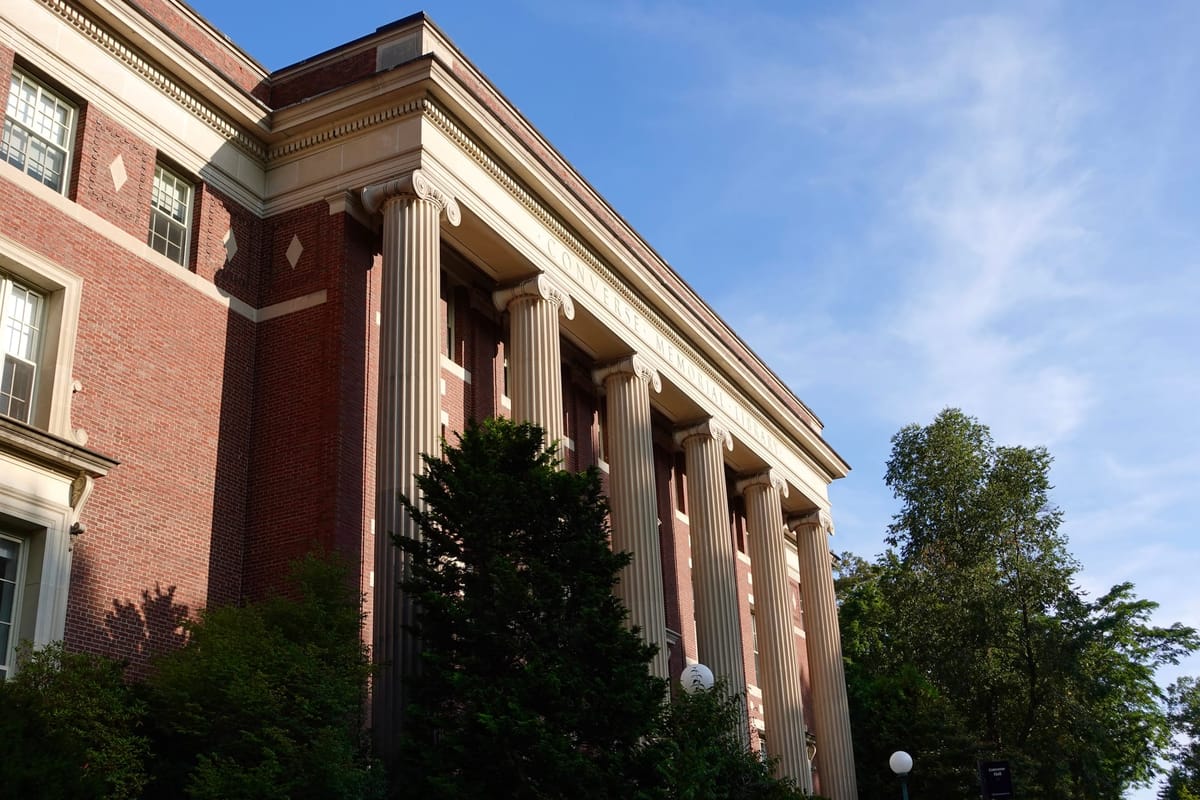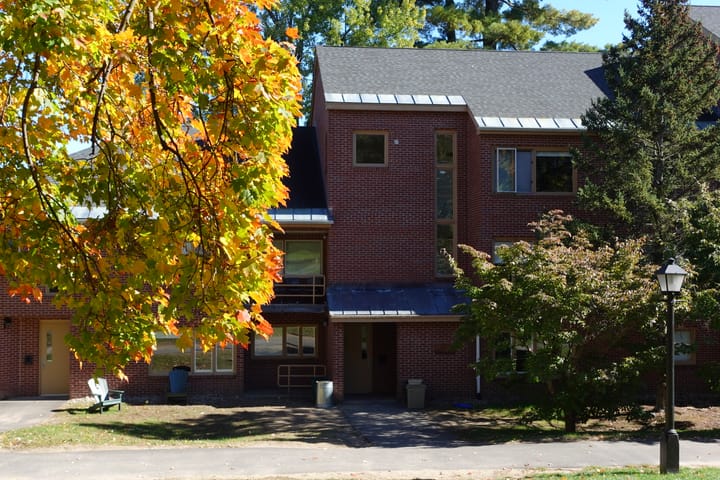Provost, Professors Respond to Growing Grade Inflation Concerns
On Monday, Provost and Dean of Faculty Martha Umphrey spoke to the Association of Amherst Students regarding the state of grade inflation at Amherst, noting that the increasing prevalence of A’s means that grades no longer accurately reflect students’ standings.

On Monday, Provost and Dean of the Faculty Martha Umphrey, Samuel A. Hitchcock Professor in Mineralogy and Geology Anna Martini, and Director of Institutional Research Jesse Barba presented on the topic of grade inflation at the college in the opening segment of the Association of Amherst Students (AAS) weekly meeting.
Umphrey began by explaining the motivation for the presentation. “We’re here partly because there was an editorial in The Student earlier this semester that, in a sense, requested that we come in and talk with students and hear from you about what you think about this issue,” she said.
She noted that her goal was to address the growing conversation about grade inflation and provide insight into the faculty discussions held over the past few months regarding this topic.
To begin, Umphrey emphasized that Amherst is not the only institution having these conversations. “Grade inflation is a phenomenon, not just at Amherst College, but really across the country … This is a phenomenon that many, many institutions are grappling with,” she said.“What does a grade mean when so many people are getting basically the same grade in any given class?”
Umphrey explained that much of the college’s concern about grade inflation stems from the fear that students are no longer receiving valuable feedback that accurately reflects their current standing. “Grades need to be one part of a set of practices that give students meaningful feedback, so that you can develop as students,” she said. “To the extent that grade compression and grade inflation tend to diminish the signals that grades give to students, then we have a problem.”
Barba, who provided data on the current state of grade inflation at Amherst, noted that there has been a 70% increase in A and A+ grades over the past 10 years, with most of that increase occurring within the last five to six years. He also shared that more than 75% of the grades the college awarded last year were in the A- to A+ range. Currently, all but five subjects at the college have a median grade of A.
Barba also pointed to the problem of grade compression, noting that a student with a 3.0 GPA would be in the third percentile. “3.0 being the third percentile means we basically have a one-point grading scale,” Barba said. “It’s either three or four … Almost all of you are in that one single point.”
Given this compression, Barba noted that it has become “very hard to differentiate” among student success based on grades. “It’s very hard for us to know who’s really excelling here, who’s taking intellectual risks that may have led to a few — two, three — A-minuses versus who’s playing it safe,” he said.
Barba proceeded to share the calls he received from the Office of Fellowships inquiring about how to interpret students’ good GPAs. “They say, ‘What percentile of the class are [they]?’ I say, ‘45th’... It does you no favors in the application process when we have to say things like that,” Barba said.
Barba also discussed the effects of grade compression on academic awards. He noted that there was a 12-way tie for the Woods-Travis Prize last year, a prize awarded to the graduating senior(s) with the highest GPA. “This year it’ll be a 13-way tie if nothing changes, and in the junior class, it’s currently a 29-way tie,” he said. “That gives you some sense of just how many students are bumping up against the absolute ceiling of our grade distribution.”
On the flip side, Barba pointed out that grade compression can also obscure the picture of which students are actually struggling. “We’re kind of losing some signal for some students who … do need some kind of intervention [but] may think they’re actually doing better than they really are,” Barba said.
Following Barba, Martini then took the floor, explaining how these conversations about grading arose and what the potential policy implementation might be. Martini said that the issue of grade inflation came to light last spring, when the Faculty Executive Committee tasked the Committee on Student Learning, which typically oversees curricular policies at the college, with examining grading practices at Amherst. This, she said, led to a series of conversations among faculty members as well as a “Provost Retreat” over the summer, which brought in outside speakers to initiate even broader faculty discussions about grading and grade inflation at Amherst.
Martini noted that this fall, the committee has continued these conversations and has also sent each department a breakdown of its grades along with a series of questions for them to discuss amongst themselves. These questions, she noted, were designed to get the departments to reflect upon their current grading practices as well as how they train new faculty members to grade.
Martini emphasized that these discussions are still ongoing and that no final decisions have been made. “This is not something that we will have a polished report on very soon — hopefully by February. That is one of our goals,” she said.
After this report is finalized, it will be sent to the Committee on Educational Policy, which is responsible for reviewing policy proposals related to curriculum and academic matters, before being voted on at a faculty meeting for final approval.
When the floor opened to student questions, many asked about the potential consequences of grading policy changes in the immediate future, such as for those applying to graduate, law, and medical school, as well as for those applying to jobs at companies with strict GPA cutoffs. Other students asked how these future grade inflation policy changes would be implemented fairly across departments, and in humanities versus STEM classes.
In response to many of these concerns, Umphrey claimed that the college’s goal is not to harm Amherst students’ chances of success, but to have grades be a better indication of actual student performance for greater academic and personal growth in the long term.“Really, the point of this is not to focus on the letters, but to try to provide effective feedback to students,” she said. Umphrey expressed a desire for the college to create an academic environment where the grades given out truly “mean something.”
“When everybody gets an A, nobody gets an A,” Umphrey said.





Comments ()